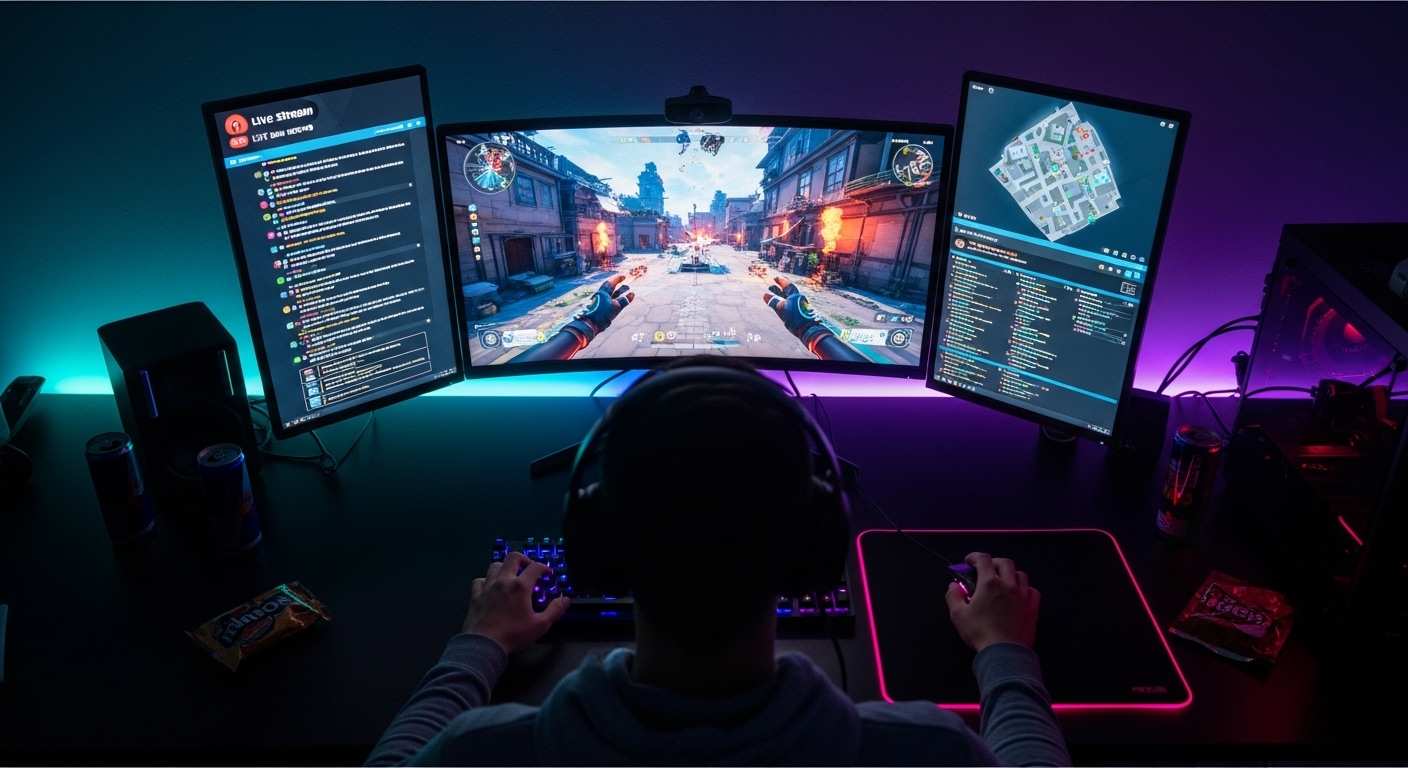Gaming has come a long way since its inception. What began as simple, pixelated visuals on arcade machines has now evolved into stunning, lifelike experiences that blur the line between reality and fantasy. From immersive open-world games to virtual reality (VR) and augmented reality (AR), the gaming industry continues to push boundaries. This transformation not only reshapes how we play but also how we connect, interact, and experience the digital world. In this blog post, we’ll explore the key developments in gaming technology, the rise of new gaming cultures, and what the future holds for this dynamic entertainment medium.
The Rise of Next-Gen Consoles and Gaming Hardware
One of the most exciting advancements in gaming in recent years is the development of next-gen consoles and powerful gaming hardware. The PlayStation 5, Xbox Series X, and high-performance gaming PCs have set new standards for graphical fidelity, performance, and load times, offering players experiences previously unimaginable.
These consoles are equipped with cutting-edge technology, including custom-designed processors, ray tracing capabilities, and lightning-fast solid-state drives (SSDs). Ray tracing, for example, simulates how light interacts with objects in the game, creating realistic reflections, shadows, and lighting effects that enhance immersion. This has enabled game developers to create highly detailed and visually stunning worlds that draw players into the action.
Additionally, the rapid improvement in hardware has made it possible for gamers to experience more seamless and expansive worlds. Games can load faster, offering near-instant transitions between environments, and render massive landscapes with intricate details. As hardware continues to improve, the distinction between virtual and real worlds becomes increasingly hard to distinguish, enhancing the overall gaming experience.
Cloud Gaming: The Future of Accessibility and Convenience
Cloud gaming is rapidly changing the way we access and play video games. Platforms like Google Stadia, NVIDIA GeForce Now, and Xbox Cloud Gaming are breaking down barriers by allowing players to stream games directly to their devices without the need for high-end hardware. This means you can play the latest AAA titles on a smartphone, tablet, or even a smart TV with minimal lag and high-quality graphics.
The primary appeal of cloud gaming is its accessibility. Players no longer need to invest in expensive gaming consoles or powerful gaming PCs to enjoy the latest games. Instead, cloud gaming platforms host the heavy processing, delivering the game directly to the player via the internet. With faster internet speeds and more stable cloud infrastructures, gaming will continue to become more accessible to a wider audience.
Cloud gaming also allows for greater flexibility. You can start playing on your console, then continue on your mobile device when you’re on the go. As the technology improves, the experience will become smoother and more immersive, eventually eliminating the need for physical gaming hardware altogether.
Virtual Reality (VR) and Augmented Reality (AR): New Dimensions of Gameplay
While traditional gaming relies on screens to immerse players in digital worlds, Virtual Reality (VR) and Augmented Reality (AR) offer entirely new ways to engage with video games. VR immerses players in fully realized, 3D environments, while AR integrates digital elements into the physical world around them.
VR has made significant strides in recent years, thanks to devices like the Oculus Quest and PlayStation VR. These headsets allow players to fully interact with game environments using motion controllers, creating a sense of physical presence within the game. In VR games like Half-Life: Alyx, players can physically reach out to interact with objects, dodge incoming projectiles, or explore alien worlds, offering a level of immersion that traditional gaming cannot match.
On the other hand, AR games like Pokémon GO have introduced a new way to experience gaming by blending the digital and physical worlds. In Pokémon GO, players use their mobile phones to find and catch Pokémon that appear in real-world locations. AR is also being explored for educational purposes, with apps that help students visualize complex concepts, such as the solar system or anatomy, in an interactive, real-world context.
Both VR and AR are pushing the boundaries of what gaming can be, making it more interactive and immersive than ever before. These technologies also have the potential to transform other industries, including education, training, and even healthcare, by offering hands-on, virtual experiences.
The Growth of Online Multiplayer and Community Building
Multiplayer gaming has been around for decades, but in recent years, it has evolved into a massive social experience that connects players from around the world. Online multiplayer games like Fortnite, Apex Legends, and Call of Duty: Warzone have become global phenomena, with millions of players engaging in competitive matches and cooperative gameplay every day.
The rise of social gaming platforms such as Twitch and Discord has further enhanced this experience by allowing players to connect with each other in real-time. Twitch, for example, lets gamers livestream their gameplay to an audience, while platforms like Discord offer dedicated spaces for communication and community building. These platforms foster strong connections between players, creating a sense of belonging within gaming communities.
Esports, the competitive gaming scene, has also exploded in popularity. Professional players, teams, and tournaments now attract millions of viewers, with esports events broadcast globally on streaming platforms. Games like League of Legends, Dota 2, and Overwatch offer huge prize pools and professional careers for top-tier players. The rise of esports has cemented gaming as a serious competitive endeavor, with a growing audience and increasing sponsorship from major brands.
Indie Games: Creativity and Innovation at the Forefront
While large studios continue to produce blockbuster titles, indie developers have become a significant force in the gaming industry. Thanks to platforms like Steam, itch.io, and Kickstarter, smaller studios can release games that are creative, unique, and risk-taking—often with a focus on storytelling and artistic expression.
Indie games like Hades, Celeste, Undertale, and Hollow Knight have garnered critical acclaim for their innovative gameplay, distinctive art styles, and powerful narratives. These games often push the boundaries of traditional game design, experimenting with new mechanics and unconventional storytelling approaches. Indie developers also have the freedom to explore niche genres and tell personal, heartfelt stories that might not have mass appeal but resonate deeply with players.
The rise of indie games has enriched the gaming landscape by offering a wider variety of experiences that appeal to different tastes. Whether it’s a pixel art platformer or a thought-provoking narrative game, indie games offer something for everyone, proving that creativity often thrives outside of the big-budget studio model.
The Future of Gaming: What’s Next?
The future of gaming is exciting, with new technologies and ideas continuing to shape the industry. We can expect even more immersive experiences, as advances in AI, machine learning, and procedural generation create worlds that feel more alive and responsive than ever before. AI-driven narratives could adapt in real-time to player decisions, making each playthrough unique. Likewise, procedural generation could lead to virtually limitless game worlds, offering players new areas to explore and conquer each time they log in.
Augmented and virtual reality are also expected to become more integrated into mainstream gaming. While VR and AR are still in their early stages, the next generation of headsets, sensors, and software could take immersion to unprecedented levels. Whether it’s exploring distant planets, stepping inside your favorite fantasy realm, or playing games that require physical movement and interaction, these technologies have the potential to transform gaming from something you watch or control into something you experience firsthand.
Furthermore, the expansion of cloud gaming will make high-quality gaming accessible to anyone with a stable internet connection, regardless of the device they own. This democratization of gaming could lead to an even larger, more diverse global community of gamers, breaking down barriers of hardware and geography.
Conclusion: Gaming’s Ever-Expanding Horizons
Gaming has evolved from a niche pastime into one of the most influential forms of entertainment in the world. Thanks to advancements in hardware, cloud technology, and immersive experiences like VR and AR, gaming is no longer just about pressing buttons on a controller. It’s about experiencing new worlds, telling meaningful stories, and connecting with people across the globe.
As technology continues to advance and new trends emerge, gaming will continue to surprise and delight. The future promises even more immersive, interactive, and social experiences that will push the limits of what we can expect from entertainment. Whether you’re a casual player or a competitive esports enthusiast, one thing is clear: the world of gaming is only going to get bigger, better, and more exciting.



